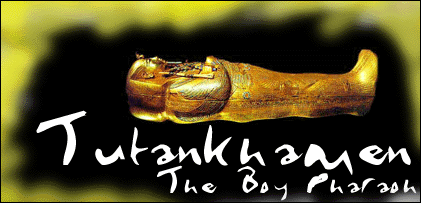|
But the archaeologists
uncovered something else, too - the so-called curse of the pharaohís
tomb. According to legend, the tombs were protected with a curse,
to prevent grave-robbers breaking in.
Five months
after opening King Tuts tomb, Lord Carnarvon was dead. He died,
so it was thought, of blood poisoning from an infected mosquito
bite. The story is that, when he died in Cairo, all the lights
went out while, at the same time back in England his favourite
dog howled loudly - and dropped dead!
In just seven
short years after the tombs discovery, 11 people associated with
the expedition had died early of unnatural causes. The press loved
the story, calling it the Mummyís Curse. By 1935, they had blamed
the curse for 21 victims. But, funnily enough, Howard Carter never
believed in the curse - and he lived until the age of 66 and died
a natural death!
Then, in the
1990s, scientists discovered there may have been a curse after
all - but of an entirely different kind. A German scientist discovered
mould spores on some mummies in museums. These moulds can live
for thousands of years, and could be breathed in by the people
opening the tombs. They can then set up a life-threatening infection
inside the body.
Other people
believe dangerous bacteria - germs - could live in the mummified
bodies. These would infect the explorers, leading to serious illnesses
such as pneumonia.
Finally, there
are those who believe the ancient Egyptian priests deliberately
used poisons that we do not even know about today to protect their
dead kings.
Whatever the
truth, despite being dead for more than 3 300 years, the boy pharaoh,
Tutankhamen, left us a wonderful gift - a priceless collection
of artefacts portraying Egyptian life and social customs of that
time. It is almost like a time machine to the past
|

